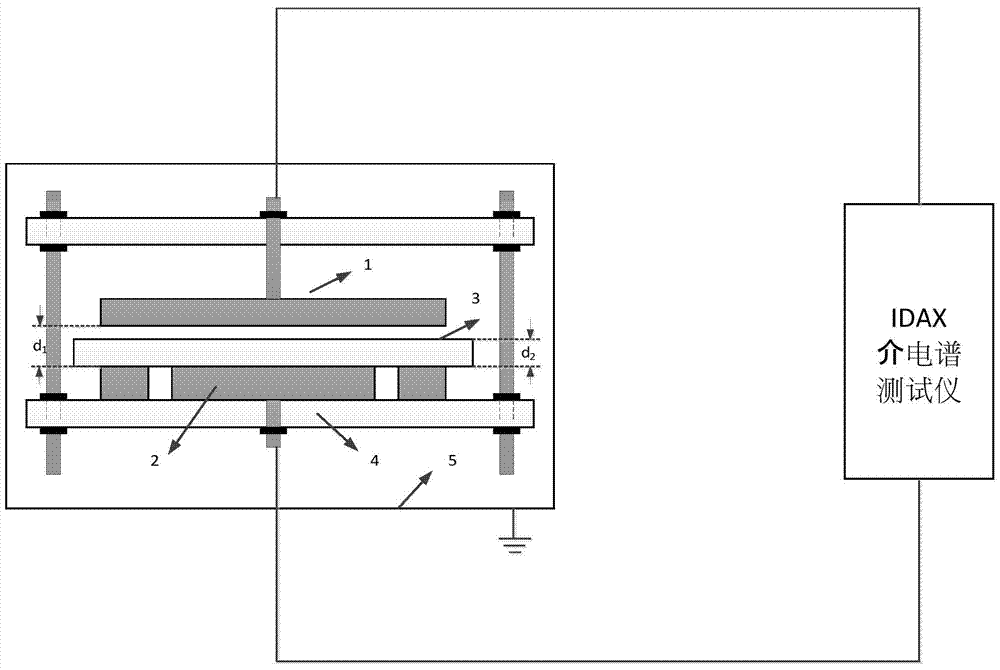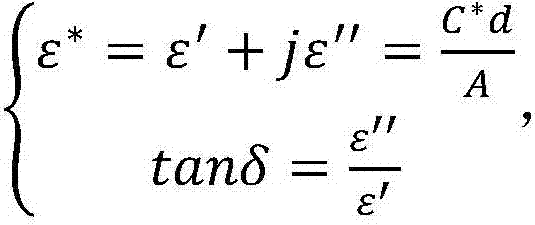A non-contact method for measuring the frequency-domain dielectric spectrum of composite materials
A frequency domain dielectric spectrum and composite material technology, which is applied in the field of non-contact measurement of composite material frequency domain dielectric spectrum, can solve the problems of affecting the dielectric properties of materials, high cost of gold, easy to invade materials, etc. , Improve the measurement accuracy and avoid the effect of material deformation
- Summary
- Abstract
- Description
- Claims
- Application Information
AI Technical Summary
Problems solved by technology
Method used
Image
Examples
Embodiment
[0033] like figure 1 As shown, the present invention proposes a non-contact method for measuring the frequency-domain dielectric spectrum of composite materials, using air dielectric spectrum as a reference calibration, and combining the series model of air and composite materials to measure the frequency dielectric spectrum of composite materials. like figure 2 Shown, what the present invention adopted is IDAX-300 dielectric spectrum test system, and described test process comprises the steps:
[0034] 1. Input the test voltage, frequency range, frequency interval and other parameters on the dielectric spectrum tester through the preset software as required.
[0035] 2. Fix the lower electrode 2 on the bracket 4 .
[0036] 3. The composite material 3 (the thickness of the composite material is d 2 , the area of the composite material is a 1 ) placed between the test electrodes. The required area of the test piece a 2 Greater than the electrode area a 1 .
[0037]...
PUM
 Login to View More
Login to View More Abstract
Description
Claims
Application Information
 Login to View More
Login to View More - R&D
- Intellectual Property
- Life Sciences
- Materials
- Tech Scout
- Unparalleled Data Quality
- Higher Quality Content
- 60% Fewer Hallucinations
Browse by: Latest US Patents, China's latest patents, Technical Efficacy Thesaurus, Application Domain, Technology Topic, Popular Technical Reports.
© 2025 PatSnap. All rights reserved.Legal|Privacy policy|Modern Slavery Act Transparency Statement|Sitemap|About US| Contact US: help@patsnap.com



